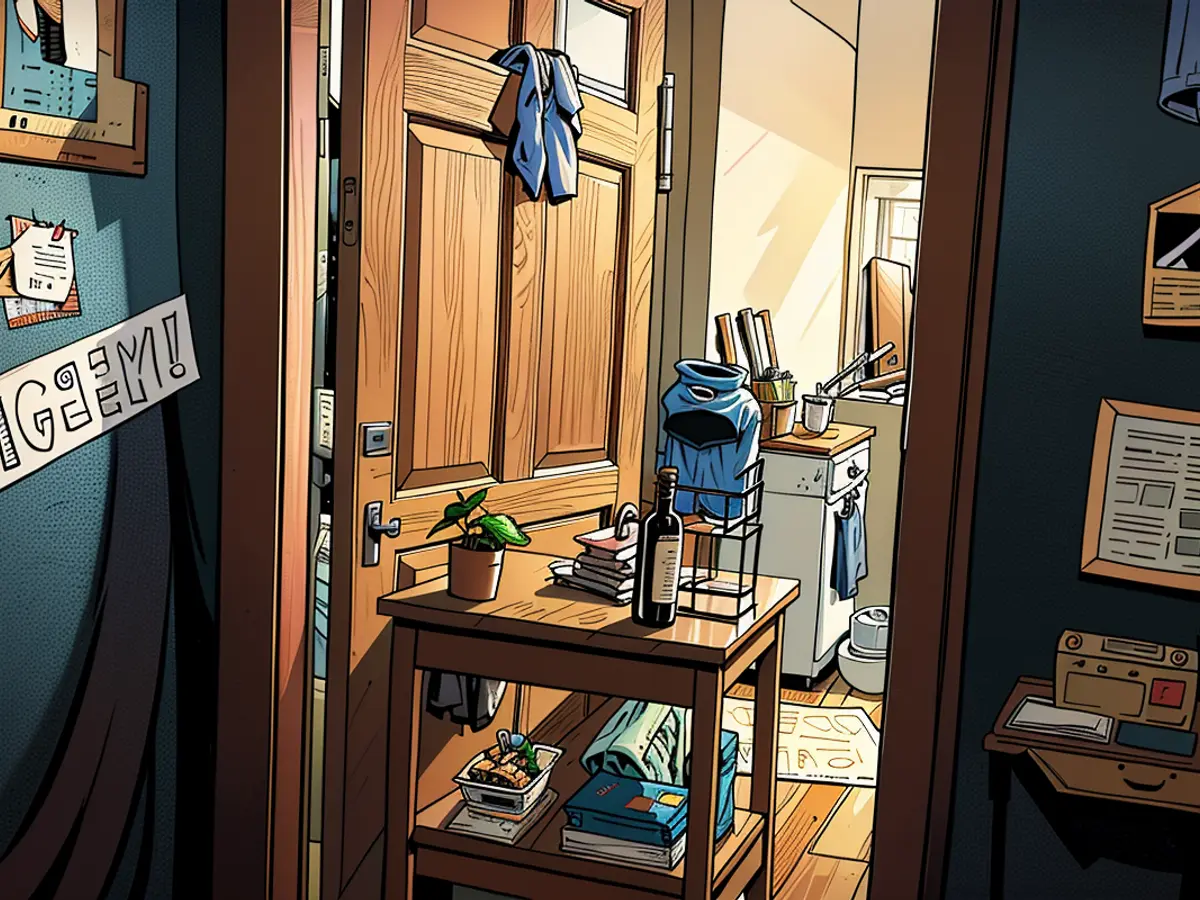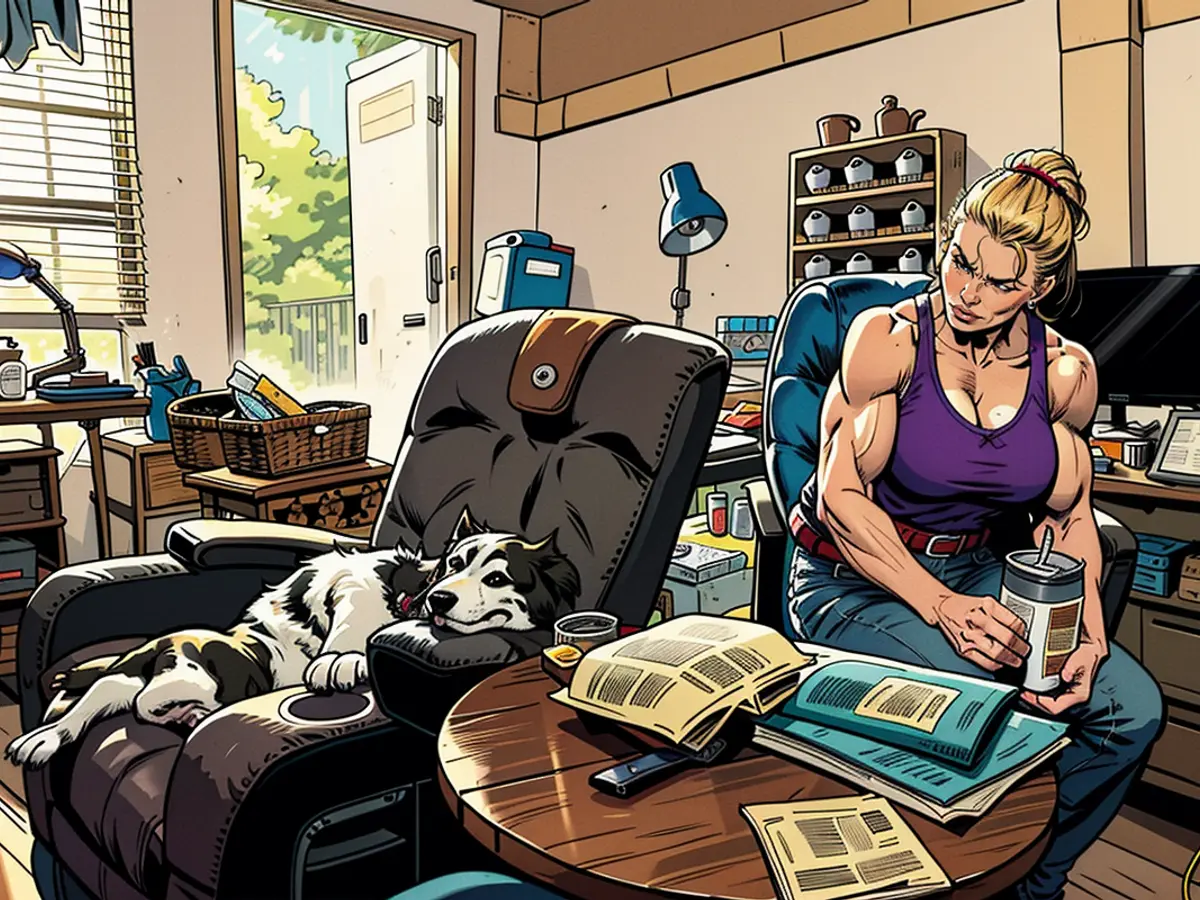Anger grows as some senior facilities left without power for days: ‘It’s horrible what the state of Texas is doing’
It had been days since Hurricane Beryl blew ashore from the Gulf of Mexico on July 8, causing widespread destruction and knocking out power to more than 2 million people, including the Houston senior independent living facility where Kitzmiller lives. Outdoor temperatures had reached at least 90 degrees most days, and the heat inside the building was stifling.
Kitzmiller moved there not long ago with Kai, her 12-year-old dog, shortly after riding out 90-plus-mph winds from a May derecho under a comforter on the floor of the 33-foot RV she called home. She didn’t need medical care, as a nursing home would offer, and thought she and Kai could be safer at an independent senior facility than in the RV. She assumed her new home would have an emergency power system in place at least equivalent to that of the post offices she’d worked in for 35 years.
“I checked out the food. I checked out the activities,” said Kitzmiller, 61, now retired. “I didn’t know I needed to inquire about a generator.”
Even after multiple incidents of extreme weather — including a 2021 Texas winter storm that caused widespread blackouts and prompted a U.S. Senate investigation — not much has changed for those living in long-term care facilities when natural disasters strike in Texas or elsewhere.
“There has been some movement, but I think it’s been way too slow,” said David Grabowski, a professor of health care policy at Harvard Medical School. “We keep getting tested and we keep failing the test. But I do think we are going to have to face this issue.”
A power outage can be difficult for anyone, but older adults are especially vulnerable to temperature extremes, with medications or medical conditions affecting their bodies’ ability to regulate heat and cold. Additionally, some medications need refrigeration while others cannot get too cold.
Federal guidelines require nursing homes to maintain safe indoor temperatures but do not regulate how. For example, facilities face no requirement that generators or other alternative energy sources support heating and air conditioning systems. States are largely responsible for compliance, Grabowski said, and if states are failing in that regard, change doesn’t happen.

Furthermore, while nursing homes face such federal oversight, lower-care-level facilities that provide some medical care — known as assisted living — are regulated at the state level, so the rules for emergency preparedness vary widely.
Some states have toughened those guidelines. Maryland adopted rules for generators in assisted living facilities following Hurricane Isabel, which left more than 1.2 million residents in the state without power in 2003. Florida did so for nursing homes and assisted living facilities in 2018, after Hurricane Irma led to deaths at one facility.
But Texas has not. And no requirements for generators exist in Texas for the roughly 2,000 assisted living facilities or the even less regulated independent living sites, like Kitzmiller’s.
Generally, apartment complexes marketed to senior citizens, known in the industry as independent living facilities, don’t have any special regulations in Texas and many other states.
Nationally, assisted living facilities and independent living facilities have been the fastest-growing sectors in senior living. Residents at such facilities often have medical needs, Grabowski said, but for a variety of reasons have chosen to live in an environment that allows more independence than a nursing home, which would provide medical care. That doesn’t mean the residents in these lower-care-level facilities are any less susceptible to extreme temperatures when the power goes out.
“If you’re overwhelmed by the heat in your apartment, that’s unsafe,” he said.
Republican state Rep. Ed Thompson tried several times since 2020 to pass legislation requiring assisted living facilities in Texas to have backup generators. But the bills failed. He is not seeking reelection this year.
“It’s horrible what the state of Texas is doing,” said Thompson, blaming corporate greed and politicians more interested in stirring up their base and raising their national profile than improving the lives of Texans. “How we treat our elderly says something about us — and they’re not being treated right.”
Nim Kidd, chief of the Texas Division of Emergency Management, said at a July 11 press conference that senior facility operators are accountable if they do not keep residents safe. “That location is responsible for the health, safety, and welfare of the patients and residents that are there,” he told reporters. “It is that facility’s responsibility.”
Under Texas law, power restoration is supposed to be prioritized for nursing, assisted living, and hospice facilities.
The resistance to adding oversight or more governmental protections has not surprised Gregory Shelley, a senior manager at the Harris County Long-Term Care Ombudsman Program at UTHealth Houston’s Cizik School of Nursing. He said that while he believes the safety and health of residents are paramount, he recognizes that installing generators is expensive. He also said some people within the industry continue to believe extreme events are rare.
“But all of us in Houston this year already learned that they’re happening more frequently,” Shelley said. “This is already the third time since May that big portions of Houston have been without power for long periods of time.”
After the 2021 blackouts, Texas’ Health and Human Services Commission conducted a voluntary survey that found 47% of the assisted living and 99% of the nursing care facilities that responded reported having generators.
The U.S. Senate investigation following the 2021 Texas storm recommended a national requirement that assisted living facilities have emergency power supplies to both maintain safe temperatures and keep medical equipment running.
A 2023 annual report from Texas’ long-term care ombudsman, Patty Ducayet, also recommended requiring generators at assisted living centers. The report suggested that all long-term care facilities maintain safe temperatures in a location that can be accessed by every resident. The report recommended requiring assisted living facilities to annually submit emergency response plans to state regulators to be reviewed by state officials. The recommendations have not been adopted.
Get CNN Health's weekly newsletter
Sign up here to get The Results Are In with Dr. Sanjay Gupta every Tuesday from the CNN Health team.
On July 15 — more than a week after Beryl hit — Kitzmiller said she just wanted the power back on. She praised the staff at her facility but said she worried for residents who were isolated on her building’s second and third floors, which were hotter amid the outage. Some were unable to keep required medicine refrigerated, she said. And without functioning elevators, many couldn’t get to the first floor, where it was cooler.
Mostly, Kitzmiller said, she was frustrated with companies and politicians who hadn’t yet fixed the problem.
“It’s their mothers, their grandmothers, and their family in these homes, these facilities,” she said. “All I can think is ‘Shame on you.’”
KFF Health News is a national newsroom that produces in-depth journalism about health issues and is one of the core operating programs at KFF — an independent source for health policy research, polling, and journalism.
Kitzmiller's concern for her fellow residents at the senior facility increased during the power outage, as some medications required refrigeration and the high temperatures exacerbated health issues related to the body's ability to regulate heat.
David Grabowski emphasized that the lack of emergency power systems in place in many assisted living facilities, including Kitzmiller's, leaves older adults particularly vulnerable to temperature extremes and the consequences on their medication storage.








